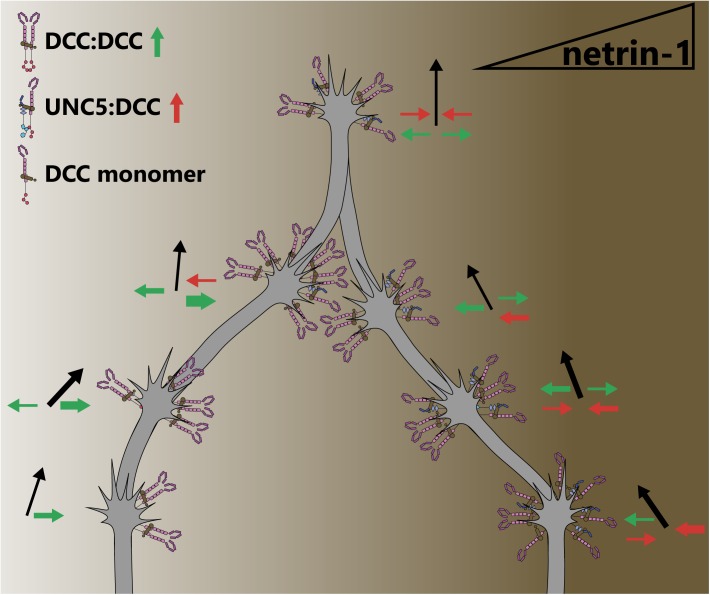FIGURE 4.
The concentration of netrin-1 may switch attraction to repulsion responses. Attractive and repulsive forces generated by DCC and UNC5 dimers are represented as green and red arrows, respectively, leading to an axon outgrowth vector (black arrows). As the concentration of netrin-1 begins to increase, more DCC homodimers are recruited. At higher netrin-1 concentrations, the promiscuous receptor binding site on netrin begins to recruit UNC5 to dimers, as this binding site has a lower affinity for UNC5 than for DCC. At the highest concentrations of netrin-1, saturation of receptors with ligand may result in receptors being maintained as monomers as opposed to dimerization, preventing downstream signaling that requires a dimer. By virtue of the concentration dependence of attraction and repulsion responses, axons are guided into a concentration in which forces are balanced. However, this may not be a stable position as receptor trafficking, intracellular secondary messengers and extracellular conditions can alter growth cone sensitivity to netrin-1.

